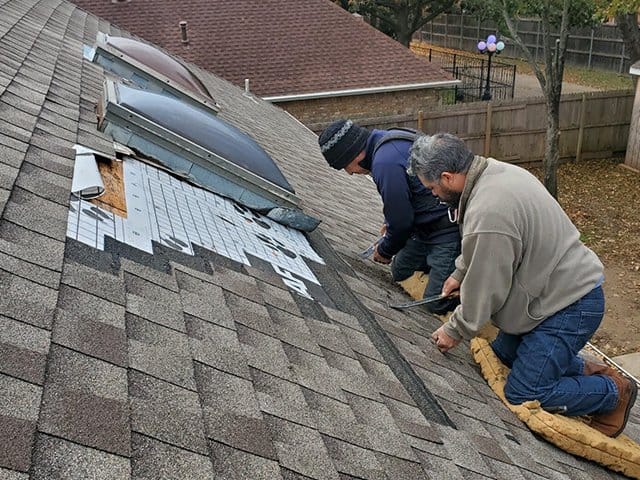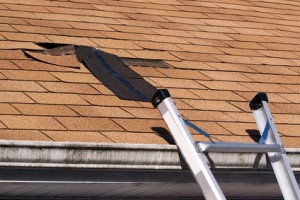Roof Repair Oahu: Quick and Affordable Roof Takes Care Of Near You
Wiki Article
Recognizing the Various Sorts Of Roofs: A Comprehensive Overview for Homeowners
In the realm of homeownership, picking the suitable roof style is a choice that brings significant effects for both performance and aesthetic charm. With a selection of alternatives-- varying from the traditional gable to the modern flat-- each type presents distinct benefits and difficulties that ought to line up with the property owner's environmental considerations and specific needs. Comprehending these differences not just aids in making an educated selection yet likewise influences long-term maintenance and power performance. As we discover the complexities of various roofing types, it becomes apparent that one dimension does not fit all; the ideal selection may amaze you.Saddleback Roof
Saddleback roofs, identified by their triangular form, are amongst one of the most prominent roof covering designs as a result of their simplicity and efficiency in losing water and snow. This layout includes 2 sloping sides that meet at a ridge, permitting effective drain and reducing the risk of water build-up. The steep pitch commonly related to saddleback roofs boosts their capacity to deal with hefty precipitation, making them suitable for various environments.In enhancement to their sensible advantages, gable roofings offer aesthetic adaptability. They can be adjusted to numerous architectural styles, from traditional to contemporary homes. The style can also fit extra features such as dormer home windows, which boost all-natural light and ventilation in the attic room.
Moreover, saddleback roofs give adequate room for insulation, contributing to energy performance. Home owners can pick from a selection of roof products, including asphalt roof shingles, metal, and floor tiles, further boosting customization choices.
Regardless of their advantages, saddleback roofs may call for additional assistance in locations susceptible to high winds or heavy snowfall. In general, the gable roofing system remains a favored option as a result of its blend of functionality, longevity, and aesthetic appeal.
Apartment Roofs
Flat roofing systems are frequently identified for their minimalist design and practical applications, specifically in industrial and commercial setups (oahu roofing). These roof coverings feature a nearly straight or straight surface, which permits easy building and construction and versatile area application. While they may lack the visual allure of pitched roofing systems, level roofings provide various benefits, especially in metropolitan environments where making the most of room is crucialAmong the key benefits of flat roofing systems is their ease of access. Home owners can utilize the roofing room for different objectives, such as roof gardens, balconies, or solar panel setups. Additionally, level roofings are typically a lot more economical to keep and mount contrasted to their sloped equivalents, as they call for fewer products and labor.
Usual materials used for level roof coverings consist of built-up roof (BUR), customized asphalt, and single-ply membranes, each offering unique benefits. Generally, flat roofings offer as a adaptable and functional selection for several house owners and services alike.
Hip Roofings
Hip roof coverings are characterized by their sloped sides that converge at the top, developing a ridge. This layout is unique from gable roofs, as all four sides of a hip roof covering slope downwards toward the walls, giving a more stable structure. The angle of the inclines can differ, permitting for versatility in building aesthetic appeals and capability.Among the main advantages of hip roofings is their capability to endure hefty winds and negative climate conditions. The sloped surfaces allow better water drainage, decreasing the risk of leakages and water damages. Furthermore, hip roofing systems offer increased attic room room, which can be made use of for storage or even exchanged comfortable areas.
Nonetheless, creating a hip roofing system can be extra pricey and complex than less complex roof covering kinds, such as gable roofings. The extra product and labor associated with producing the slopes and ensuring proper structural stability can bring about higher costs. Despite these drawbacks, lots of home owners favor hip roof coverings for their durability, aesthetic allure, and potential for energy efficiency.
Mansard Roofs
Mansard roofings, frequently acknowledged by their distinct four-sided style, attribute two inclines on each side, with the reduced slope being steeper than the upper. This architectural design, stemming from France in the 17th century, is not only visually attractive but functional, as it maximizes the useful space in the top floors of a structure. The high reduced incline enables even more headroom, making it an excellent selection for attics or loft spaces, which can be exchanged living spaces.Mansard roofing systems are defined by their versatility, fitting different architectural styles, from traditional to modern. They can be constructed with various products, including asphalt tiles, slate, or metal, providing house owners with a series of choices to suit their preferences and budget plans. Additionally, the design allows for the assimilation of dormer windows, boosting natural light and ventilation in the top levels.
However, it is necessary to take into consideration the potential drawbacks. Mansard roofings may require more maintenance because of the complexity of their layout, and their steep inclines can be challenging for snow and rainfall drainage. Overall, mansard roofing systems integrate beauty with usefulness, making them a popular option among property owners seeking distinct architectural functions.
Lost Roofing Systems
As home owners increasingly seek simpleness and capability in their architectural designs, shed roofs have actually become a preferred option. Identified by a Click Here solitary sloping airplane, a shed roofing presents a minimalist visual that enhances various home styles, from modern to rustic.One of the key advantages of a shed roof covering is its simple building and construction, which often translates to decrease labor and product prices. This design enables efficient water drain, reducing the risk of leakages and water damages. In addition, the vertical incline provides adequate area for skylights, enhancing natural light within the interior.
Shed roofs also provide flexibility in regards to use. They can be properly integrated into additions, garages, or outside structures like sheds and pavilions. Moreover, this roof covering design can suit various roof covering products, consisting of steel, asphalt shingles, and even eco-friendly roofing systems, lining up with environment-friendly initiatives.
However, it is important to take into consideration regional environment conditions, as hefty snow loads might demand modifications to the roofing system's angle or framework. On the whole, shed roof coverings present a practical and cosmetically pleasing choice for homeowners looking to take full advantage of capability without compromising style.
Conclusion


Gable roofings, identified by their triangular shape, are among the most popular roof designs due to their simplicity and effectiveness in losing water and snow. oahu site roofing. The high pop over to this site pitch frequently connected with gable roof coverings improves their ability to manage heavy rainfall, making them ideal for various environments
While they may do not have the visual allure of pitched roof coverings, flat roofs supply countless benefits, specifically in urban environments where maximizing area is important.

Report this wiki page